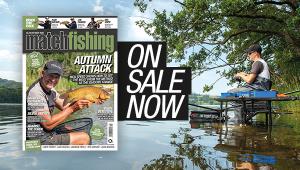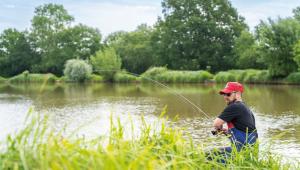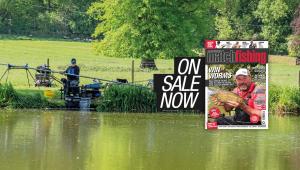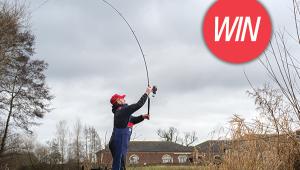The Marmite Method

Jamie Hughes explains how, when and where he likes to fish paste…
For this month’s feature I have decided to talk about my thoughts on a method that is both loved and equally hated among match anglers.
Paste fishing is a real ‘Marmite method’, that I feel is often not used enough in bigger matches but for some unknown reason seems to have a much stronger place during club and small open matches.
For me it can be a vital method to have in my armoury and in certain situations there is no other method that can compete.
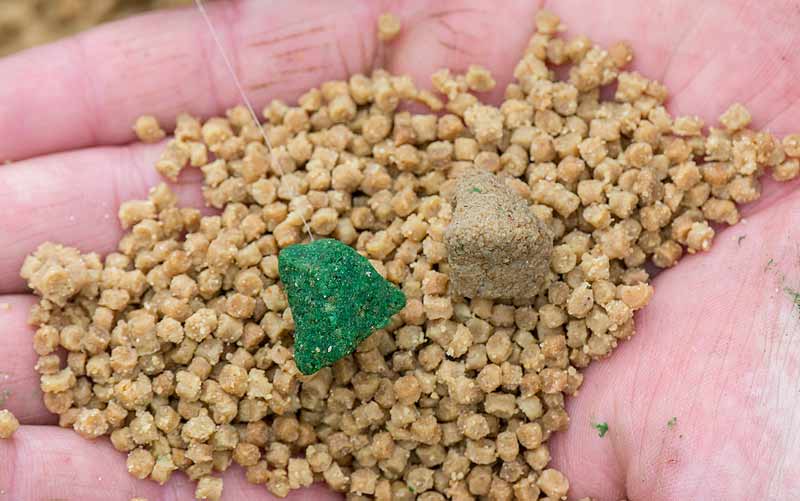
Jamie uses either green or natural coloured paste. It can often be worth swapping between them to see which gets the best response.
I must confess that I am most certainly no expert in paste fishing but I feel I have developed a good understanding of the best ways of fishing the bait and the right time and place to do so.
Paste fishing for me has become almost the only method to choose when targeting silty areas of any peg during the warmer months; attempting to fish particle baits over soft-bottomed areas will pretty much always result in a fizzing peg with few bites and many foul-hooked fish.
Paste, however, gives the fish a fairly large target to find among the silty cloud, and more importantly fish can continue gill feeding and still readily take the hook bait. But more on that later.
Over the years I have spoken to many good anglers who are all partial to a bit of paste fishing. Anglers such as Neil Machin and Lee Thornton have helped me out greatly with theories on the correct paste, feeding and rigs and it is these topics that I would like to go over in a little more detail, but before I do there are first a couple of other key aims that I feel have to be achieved when paste fishing.
First is accurate plumbing. For me, the best thing about fishing paste is that it is extremely simple to make my hook bait register on the float bristle, meaning that every movement of my hook bait is shown. This allows me to understand exactly what is happening in my peg, if any fish are present and also when my hook bait is no longer on my hook!
To achieve this I plumb up in the following way: firstly my float is shotted so the full bristle is clear of the water (this is why designated long-bristled paste floats are best) and secondly, I plumb my peg so that half the bristle is visible – this is also the amount of bristle that will be on view when the heavy hook bait has settled on the bottom. By following these steps I achieve a tight rig that is always in contact with my hook bait.
A small tip here is that I find floats with solid, tapered bristles best for this as they are less buoyant than standard hollow bristles; this means there is less chance of the buoyancy of the float pulling the hook out of the soft hook bait prematurely.
It is also worth noting that due to the silty bottom that I choose to fish paste over, a peg will often become deeper throughout a session as fish root about for the feed. This will be shown with the float sitting lower. The depth will generally need to be increased several times throughout a session.
Feeding
My feeding when fishing paste is completely different to every other bait that I fish! Generally I am trying to feed minimal bait to create greater competition and prevent fish from burying their heads in the silt in search of feed. With paste I initially want the complete opposite and try to create a good bed of feed for the fish to graze on. At this point I must stress that for me paste is not a method to begin a session with, as a peg needs to be fed and left to develop.
Going back to the gill feeding comment from earlier, I am a big believer that fish feed in different ways depending on the bait and make up of the lake bed. Fish can either pick up particles that need to be broken down before entering the stomach or alternatively filter soft food items/debris through the gills separating the food and digesting it immediately. To a fish a lump of paste is just a small pile of groundbait that can easily be processed, which makes this the perfect method for when they are feeding in this way.
What I also have to ensure is that my feed is also easy to digest. Of course, if I am fishing on a hard lake bed then particles would be fine, but when fishing over silt, baits such as groundbait and over-softened pellets are the way to go.
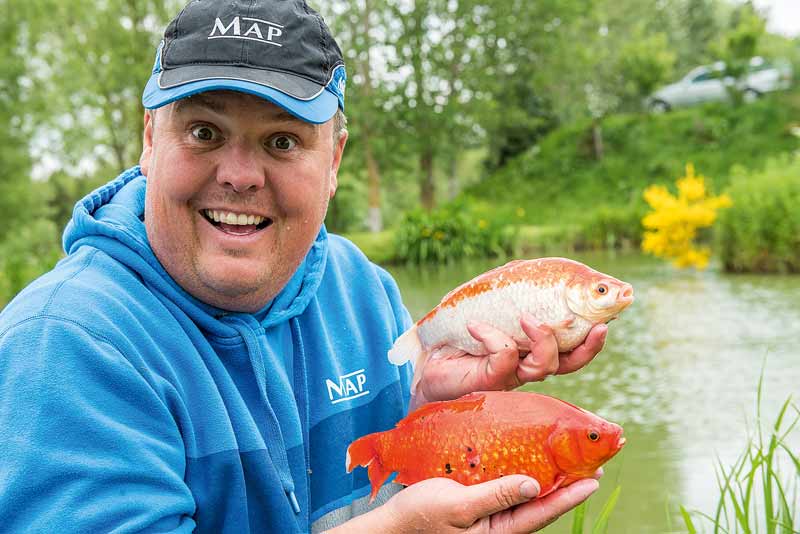
Ornamentals like this are suckers for paste!
The amount of top-up feed will always be dictated by how well the session is going but I always like to begin with a good 150ml pot of soaked micro pellets and a bit of the paste that I intend to use on the hook. I then leave the peg alone for at least 20 minutes, which should allow plenty of fish to settle over the feed and hopefully clear up before I come to try the peg. At this point I believe a silty bottom actually works in your favour as fish will continue rooting around for every last pellet, ultimately keeping them in the peg for longer. With minimal options left for the fish to feed on, my paste hook bait should also be found that little bit faster.
I only introduce more feed into the peg when bites slow down as regular feed will cause fish to come off the bottom to intercept bait.
The final point I will make about feeding is that again because of the silty bottom there will generally be lots of fizzing on the surface; this can be used as a great indicator to show when fish are present in the swim and also the need for more feed, as often when the fizzing stops so do the bites.
Paste
The type of paste hook bait that is used is entirely up to the angler as there are hundreds of different options on the market. The most important thing is that the paste behaves in the correct way.
Firstly, the breakdown of the paste has to be considered. I generally like a mix that breaks down in three to four minutes as a paste any stiffer than this will generally cause problems with the hook pulling cleanly from the paste on the strike, which in turn will result in missed bites.
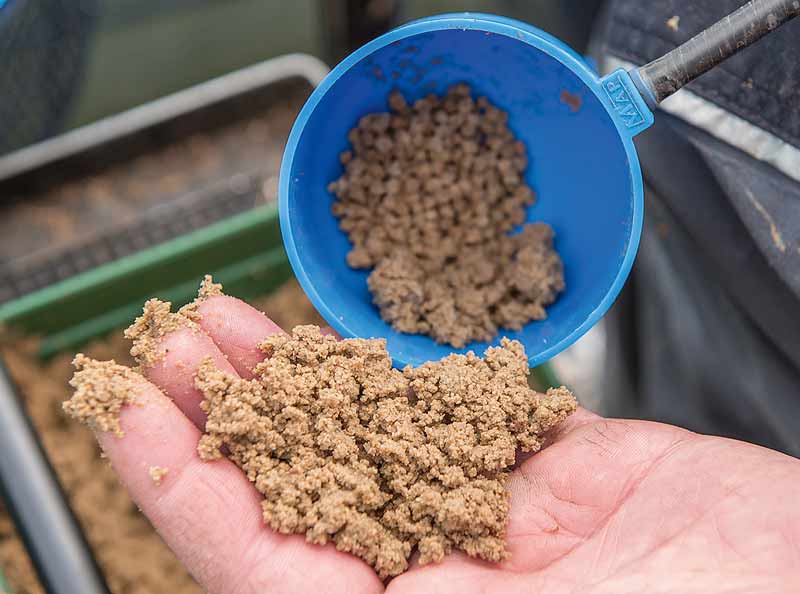
For my own paste fishing, I like to use either Bag ‘em Commercial Carp Green Paste Mix or Commercial Carp groundbait; both of these are simple to mix and can be easily tailored to suit the peg and conditions.
Both mixes are perfectly useable on their own and will break down quickly, but in windy conditions I like to add a small amount of finely ground trout pellets to the mixes. This slows down the breakdown rate, but keeps the mix smooth for easy striking.
Rigs
As always, simplicity is the way to go when it comes to paste rigs.
I like to use a long-bristled float for the reasons previously mentioned, with a 4x14 size being used in depths up to four feet or a 4x16 in four to seven feet.
The best shotting pattern I have found for paste is a double bulk. For a 4x14 rig, I have a 4in hooklength with a small bulk of three No10s just above this; a second bulk of four No9 shot is then six to eight inches above this. A 4x16 rig is shotted in the same way but with bigger shot.

A double bulk is often the best shotting pattern when paste fishing.
My reason for the double bulk is that because I aim to always have a tight line between my float and hook bait, lots of bites will be shown as lifts on the float. By having a bulk so close to the bait, all lifts are magnified and it is clear to determine the difference between a bite and the paste coming off the hook.
I won’t go in depth about line and elastics as these need to be matched to the peg and size of fish being targeted. The choice of hook, though, is far more important, as of course the strength of hook also needs to be balanced with the elastic being used, but it is the size of hook that I choose that may come as a surprise to most. Paste fishing has always been associated with heavy lines and big hooks but I find by using small size 18 or 16 hooks, my rig pulls through the paste much easier and far fewer bites are missed.
For today’s session we are on Canal Pool at Tunnel Barn Farm. This pool is perfect for fishing paste as due to the slopes on both the near and far bank, all the silt settles on the flat central track, making it difficult to fish with other baits during the summer months.
The short session went nicely, with plenty of bites once the fish had settled over the feed, and in the two hours I spent fishing the swim was only topped up once, showing just how long the fish will remain searching in the silty peg.
One final point I must make is that for me, paste is not a method that I would fish for an entire session. I like to use my paste line as an area that can be fished during the harder parts of the session to keep putting fish into my net. It is an incredibly easy line to maintain while you are fishing other areas and takes up minimal time.
Next time you’re faced with a bubbling peg give the paste a try as it’s a much better method than becoming frustrated with particle baits and losing foul-hooked fish all day long.

Note the large average stamp of F1 that the paste attracts.
Like what you see?
Or buy a single issue
- Log in or register to post comments


